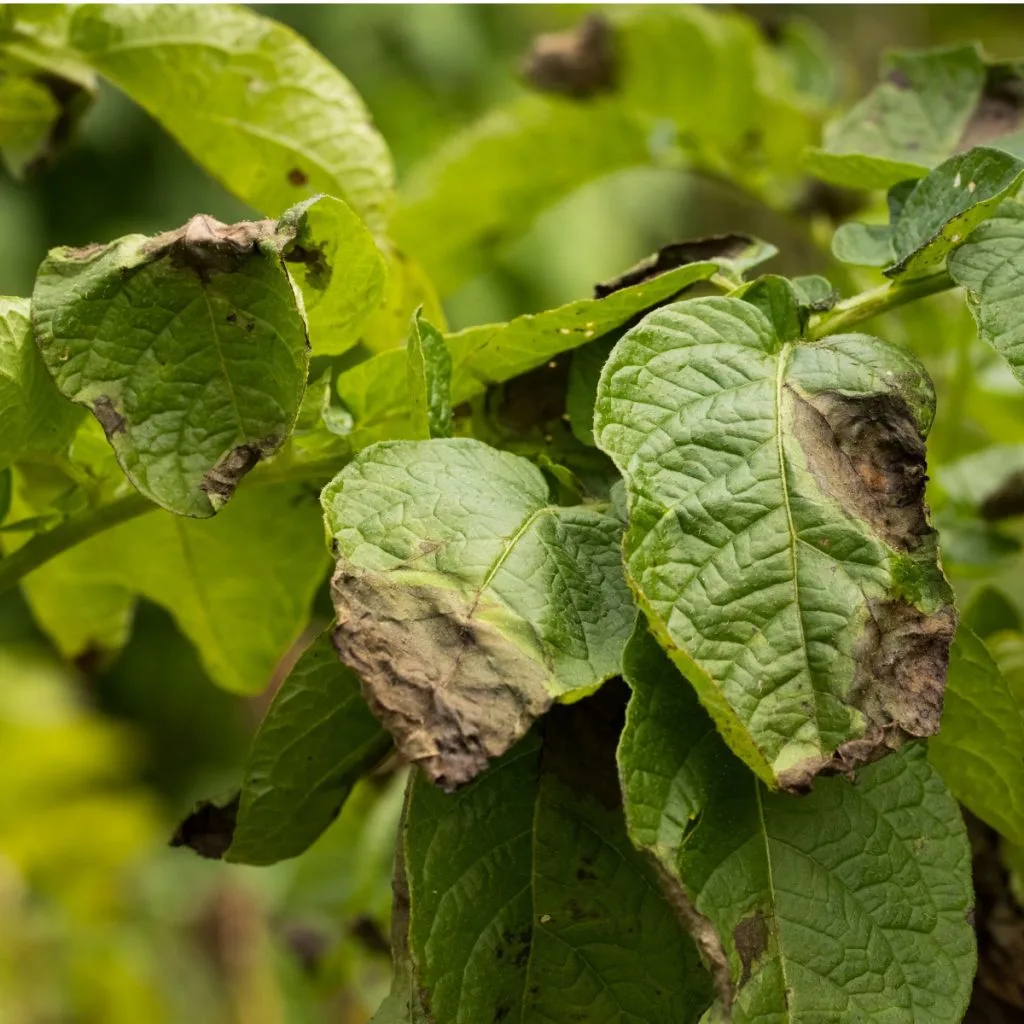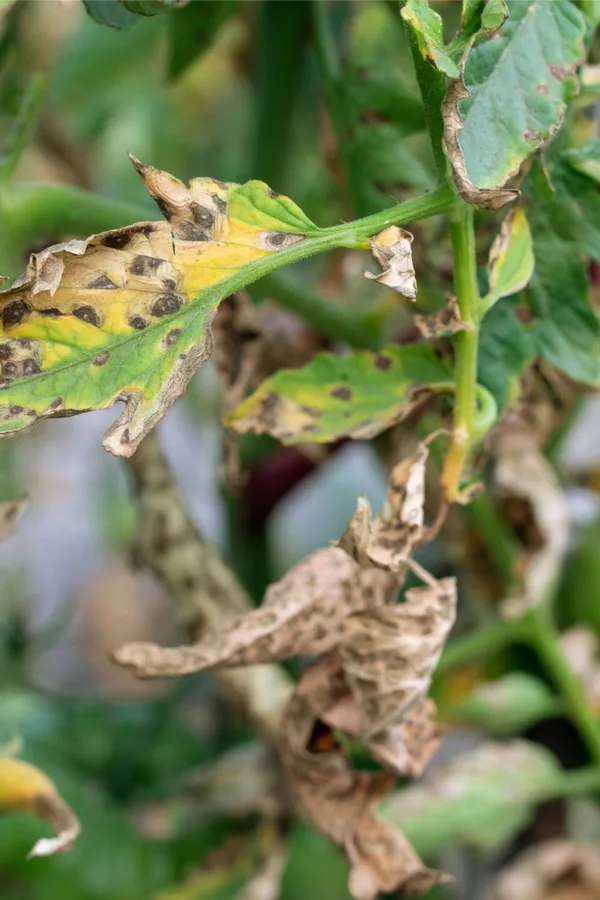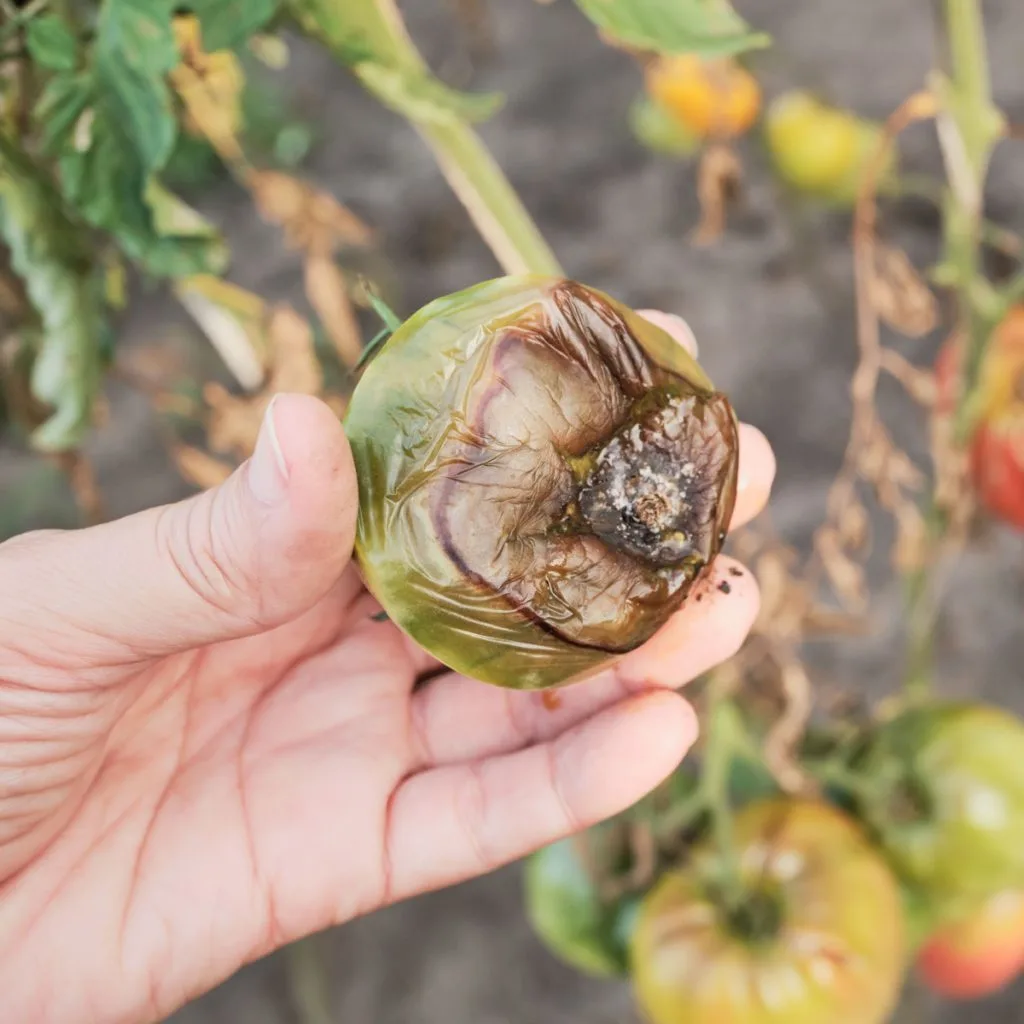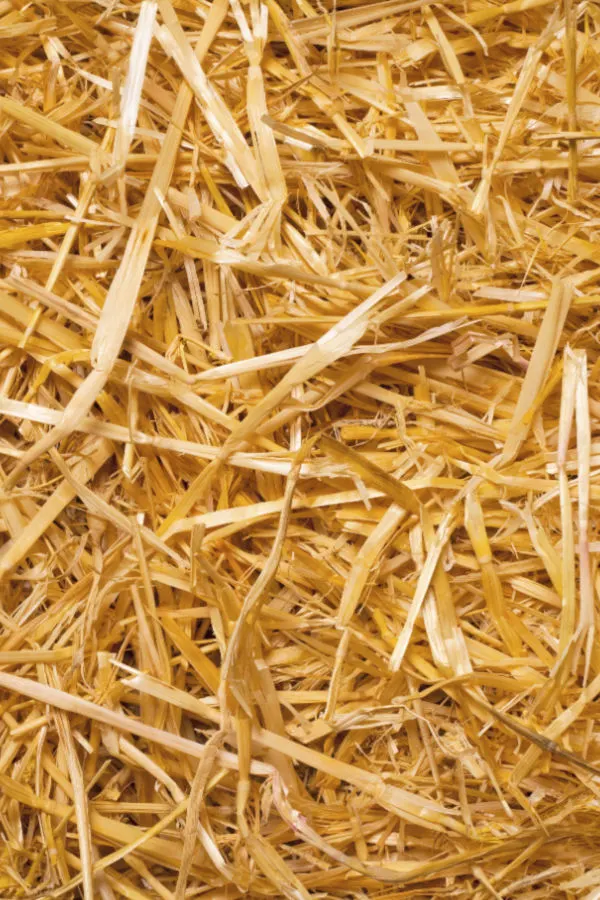Are you worried your tomato plants might be starting to show early signs of blight – and more importantly- want to know what you should do about it?
Tomatoes may be one of the most popular crops to grow in a home garden, but they’re also one of the most susceptible to disease. And one of the most destructive and fast-moving diseases of all that can affect your tomato plants is blight.
Both early blight and late blight can strike tomato plants during the growing season. The disease thrives in warm, humid weather, which makes late July and August one of the most dangerous times of all for tomato plants.

Unfortunately, once blight starts, it can spread quickly. Not just to nearby tomato plants, but to other crops and even into the soil itself. The key to controlling blight is simple – act fast and act smart. If you catch the signs early and follow the right steps, you can sometimes slow or even be lucky enough to stop it to help save some of your harvest. But at the very least – you can save the rest of your garden and future tomato crops!
When Tomato Plants Show Signs Of Blight
Why Blight Is So Dangerous
Blight is a fungal disease that spreads through tiny spores. It can be carried by the wind, by insects and animals, or even by your garden tools. And once on top of your garden soil, the spores can easily splash up on plants whenever it rains or you water.
Unfortunately, July and August often bring the perfect storm for blight to develop. Overnight moisture and high daytime humidity create the ideal environment for the spores to grow. And once they do, they spread fast.
Blight doesn’t just weaken plants – it can completely take away all of their leaves and destroy fruit. It also can spread to other nearby plants and more permanently infect your garden soil for crops in future years. And that is exactly why fast action is critical the moment you see the first signs.
Early Blight vs. Late Blight – How To Know The Signs
Although both diseases are known as “blight,” early blight and late blight are caused by different culprits. And they also have slightly different symptoms.

Early Blight
Early blight usually shows up first in mid to late July, especially on older or lower leaves of the tomato plant. It often starts after a rainy or humid period and will gradually move up the plant if not controlled.
Early blight starts with small brown or black spots on the lower leaves of the tomato plant. These spots usually have concentric rings inside them that look like a target or bullseye. As the infection spreads, the leaves around the spots begin to turn yellow.
Eventually, the affected leaves start to shrivel up and fall off, with the disease moving higher up the plant as it worsens. Long term, early blight can reach stems and fruit, causing rot and weakening the entire plant.
Late Blight
Late blight tends to hit later in the season – in late July or August. It can be far more aggressive. Unlike early blight, it can wipe out a plant in just a few days and quickly spread through most of an entire garden.
Late blight often shows up as large, irregular-shaped spots on the leaves that look greasy or soaked with water. You might also notice white, fuzzy mold growing on the undersides of the leaves, especially early in the morning. As the disease spreads, the stems and foliage can quickly turn black and collapse. The fruit may develop firm brown spots that later begin to rot and ooze.

What To Do When You See Signs OF Blight
No matter which type of blight you suspect, fast and decisive action is your best chance to control it.
As soon as you spot brown, black, or yellowing leaves with blotches or rings, begin removing them from the plant. Even if only one or two leaves show signs, it’s better to remove them than risk the spread.
Use clean garden scissors or pruning shears to snip the leaves at the base. Do not pull them off with your hands, as this can damage the plant and spread spores to nearby leaves. Most importantly, do not throw leaves with blight in your compost pile. Instead, place them in a plastic bag, seal it, and put it in the trash.
This step is often overlooked, but it’s critical to stopping the spread of disease. After cutting infected leaves or working with a blighted plant, immediately sanitize your tools before moving to another plant.
You can do this with a mixture of 1 part bleach to 9 parts water, or by wiping tools down with rubbing alcohol or hydrogen peroxide. Let the tools dry before using again. Also, wash your hands or wear gloves if handling multiple plants.
Watch Your Plants Closely
After removing the infected leaves, monitor the plant daily. If the disease continues to spread up the plant or begins to affect stems and fruit, it may be time to take further steps.

Often, with early blight, removing infected leaves and improving airflow can slow or stop the disease. But with late blight, if conditions are right, the disease can keep spreading even after trimming.
If new leaves begin showing symptoms or large parts of the plant are affected, it’s time to remove the entire plant before it contaminates others.
Removing Severely Infected Plants Entirely
Unfortunately, once blight shows up, it usually takes over. And when it starts to, it’s time to get the plants out entirely. This is the hardest step for many gardeners, but also the most important. If a tomato plant shows extensive signs of blight – especially if fruit is rotting, stems are blackening, or the infection keeps spreading – the best action is to remove the whole plant completely.
One of the most dangerous parts of a blight outbreak is not just the damage it causes to this year’s crop, but what it can leave behind in the soil. Blight spores, especially those from early blight, can survive in the soil for multiple years. If you don’t take steps to protect your garden soil, the disease can return next season. Possibly even stronger than before.
Remove the entire plant and place it into a garbage bag. After removing any infected plants, it’s important to cover the area with a thick layer of mulch, such as straw, shredded leaves, or untreated grass clippings.
This helps stop remaining spores from splashing up onto nearby plants during watering or rainfall. Mulch also protects the soil surface and reduces the chances of any dormant spores becoming active again.

In the fall, once the gardening season is over, make sure to remove all plant debris from your garden, especially anything that might be infected. Don’t leave stems, leaves, or fruit behind to rot. Again, dispose of this waste in the trash – not the compost pile.
Planting Tomatoes Next Year
Blight spores can stay in the soil for up to three to even five years. Because of that, it is best to move your tomato plants to a new area of the garden. Also, avoid planting potatoes, peppers, or eggplant in the same area where you had a blight outbreak the year before. See: How To Avoid The 5 Most Common Tomato Planting Mistakes
These crops are all members of the nightshade family and are highly susceptible to the same blight pathogens. Try rotating with crops like beans, peas, or leafy greens instead.
Last but not least, once you have had blight, try to plant blight resistant tomato varieties. While no variety is completely immune, many have been bred to better withstand common blight strains and may slow the spread or reduce overall damage. For more tips on growing great tomatoes all season long, see: How To Revive Tired Tomato Plants In Late Summer – And Get More Tomatoes!
Here is to acting fast if you see the first signs of your tomato plants getting blight!
This Is My Garden
Follow Our Facebook Page For Great Gardening Tips And Advice! This Is My Garden Facebook Page
This Is My Garden is a garden website created by gardeners, for gardeners. Jim and Mary Competti have been writing gardening, DIY and recipe articles and books and speaking for over 15 years from their 46 acre Ohio farm. They publish three articles every week, 52 weeks a year. Sign up today to follow via email, or follow along!
